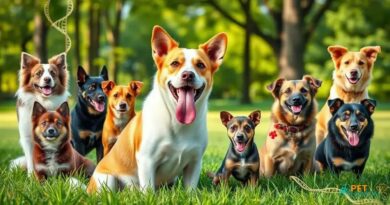What is: Anovulatory cycles in dogs
What is an Anovulatory Cycle in Dogs?
An anovulatory cycle in dogs refers to a reproductive cycle where the female dog does not ovulate. This condition can occur due to various factors, including hormonal imbalances, stress, or underlying health issues. Understanding this cycle is crucial for dog owners, especially those interested in breeding, as it can significantly affect fertility and overall reproductive health.
Signs of Anovulatory Cycles in Dogs
Identifying an anovulatory cycle can be challenging, as the signs may be subtle. Common indicators include irregular heat cycles, prolonged estrus phases, or a lack of behavioral changes typically associated with heat. Owners may notice that their female dog does not exhibit the usual signs of readiness to mate, such as increased affection towards male dogs or changes in vocalization.
Causes of Anovulatory Cycles
Several factors can lead to anovulatory cycles in dogs. Hormonal imbalances, particularly involving estrogen and progesterone, are often at the forefront. Additionally, stress from environmental changes, illness, or even poor nutrition can disrupt the normal hormonal signaling required for ovulation. Understanding these causes can help owners take preventive measures to ensure their dog’s reproductive health.
Impact on Breeding
For breeders, anovulatory cycles can pose significant challenges. A female dog that does not ovulate cannot conceive, which can lead to frustration and financial implications for those looking to breed. It is essential for breeders to monitor their dogs closely and consult with veterinarians if they suspect anovulatory cycles, as timely intervention may help address underlying issues.
Diagnosis of Anovulatory Cycles
Diagnosing anovulatory cycles typically involves a combination of physical examinations, hormone level testing, and monitoring the dog’s heat cycles. Veterinarians may perform blood tests to measure hormone levels, particularly progesterone, to determine if ovulation has occurred. This diagnostic process is vital for developing an appropriate treatment plan.
Treatment Options for Anovulatory Cycles
Treatment for anovulatory cycles in dogs varies based on the underlying cause. Hormonal therapies may be prescribed to help regulate the dog’s reproductive hormones and stimulate ovulation. In some cases, addressing environmental stressors or improving nutrition can also lead to improvements in reproductive health. Consulting with a veterinarian is crucial for determining the best course of action.
Preventive Measures
Preventing anovulatory cycles involves maintaining the overall health and well-being of the dog. Regular veterinary check-ups, a balanced diet, and minimizing stressors in the dog’s environment can contribute to a healthy reproductive cycle. Additionally, understanding the dog’s heat cycle and being proactive about monitoring changes can help catch any issues early.
Long-term Effects of Anovulatory Cycles
While anovulatory cycles may not pose immediate health risks, they can have long-term effects on a dog’s reproductive health. Repeated anovulatory cycles may lead to more significant hormonal imbalances or other reproductive issues. Therefore, it is essential for dog owners to remain vigilant and seek veterinary advice if they notice any irregularities in their dog’s heat cycles.
Conclusion on Anovulatory Cycles
In summary, understanding anovulatory cycles in dogs is essential for responsible pet ownership and breeding. By recognizing the signs, causes, and treatment options, dog owners can take proactive steps to ensure their pets maintain optimal reproductive health. Regular veterinary care and attention to the dog’s overall well-being are key components in managing anovulatory cycles effectively.


